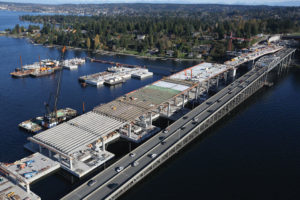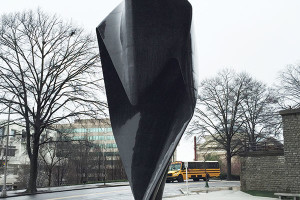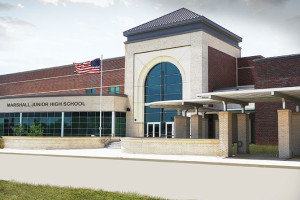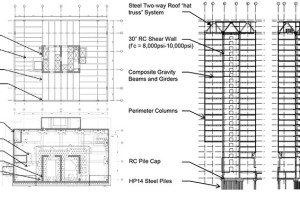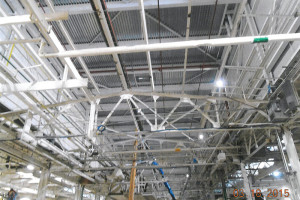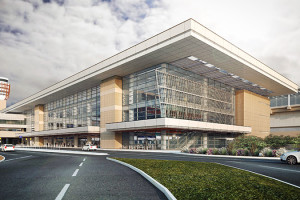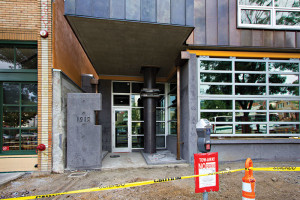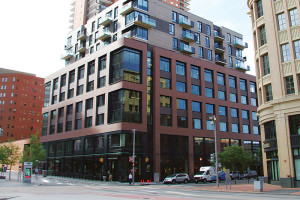The new Evergreen Point Floating Bridge, which carries State Route 520 (SR 520), is the world’s longest floating bridge, stretching 7,708.5 feet across Lake Washington in Seattle, Washington. Opened to traffic in April 2016, the bridge replaces the previous SR 520 floating bridge, which was completed in 1963 and had reached the end of its useful service life. …
Review Category : Feature
The National Council of Structural Engineers Associations (NCSEA) is pleased to present the results of the 2016 NCSEA Structural Engineering Curriculum Survey. The survey is a triennial review of the recommended NCSEA Structural Engineering Curriculum at over 250 engineering schools throughout the country that offer educational opportunities for students desiring to become professional civil/structural engineers. Since 2002, the NCSEA has promoted the recommended NCSEA Structural Engineering Curriculum as the core subject matter deemed necessary by the profession for a sound educational background in structural engineering. …
What do you do when a client approaches you with an entirely unique structural challenge? That was the structural engineering dilemma presented to Uzun + Case by artist Tristan Al Haddad of Formations Studio who proposed a 35-foot tall, 65,000-pound thin shell concrete sculpture for the Promenade office tower in Atlanta.
The first engineering question was “Why concrete – there are many synthetic materials well suited to the creation of amorphous forms?” To which the artist responded, “I want to do something with concrete that has never been done before, to create something that is simultaneously delicate and solid, something that shows the hand of its creator.”
And so the journey began. …
Masonry Tornado Shelter Case Study: Marshall Junior High, Marshall, TX
Section 423 of the 2015 International Building Code (IBC) has a new requirement that construction for new schools and additions to existing schools (up through high school, with some limited exceptions) have tornado shelters. These shelters must comply with ICC 500-2014 ICC/NSSA Standard for the Design and Construction of Storm Shelters if the project is located in the zone where the minimum required design wind speed for a tornado shelter is 250 mph, as shown by the shaded region in the attached map. (This requirement for tornado shelters also applies to critical emergency operations such as fire, rescue and 911 call centers.) …
111 Main’s reinforced concrete core wall system provides vertical and lateral support for an innovative 25-story office tower suspended over adjacent performing arts center.
Located in a region of high seismicity in close proximity to the active Salt Lake Segment of the Wasatch Fault Zone, the new 111 Main office tower in Salt Lake City, Utah, comprises 501,455 square feet of Class A office space. The 25-story building rises 387 feet above grade and contains a penthouse roof-level steel hat-truss system with all perimeter columns suspended to allow for air-rights overhang at adjacent performing arts center. …
North American automobile manufacturing and assembly plants, from the origins of the industry in the early 20th century, have held an iconic heritage position in our culture. Consider the Albert Kahn designed factories for Henry Ford. Aside from nostalgia, are these plants still useful and are they fulfilling a role in society today? The answer is, yes they are, thanks to the steel and concrete of their construction and the ingenuity of design engineers. Our case study is the Fiat Chrysler Automobiles (FCA) assembly plant in Windsor, Ontario (WAP). …
Positioned in the heart of Phoenix, the Phoenix Sky Harbor International Airport strives to serve the air transportation needs of the public and earn the reputation as the nation’s friendliest airport. To meet the ever changing needs of the future, the Airport is faced with improving and expanding their aging facilities. …
Resolved to Offer New and Updated Products
The construction software business is doing very well thanks to new products, services and structural engineers who are finding great use and economy in the latest software offerings. …
It is not often that a new building’s structural engineer is also its developer – and the synergies arising from this pairing are equally rare. How can seemingly opposing priorities and objectives combine positively? How can a developer’s challenges transform into innovative seismic engineering opportunities? The Tipping Structural Engineers (TSE) mixed-use project at 1908 Shattuck Avenue in Berkeley, CA, is that unique result of the interdependence between creative engineering and real-estate development strategies. …
It is an unprecedented time to be working in Denver. Individuals and businesses are relocating at a swift pace to the city, recognizing its natural beauty, strong business climate, and forward-thinking leadership. In fact, the city’s projected growth rate over the next five years is more than four times the national rate, according to The State of Downtown Denver, a report released last year by the Downtown Denver Partnership. …

